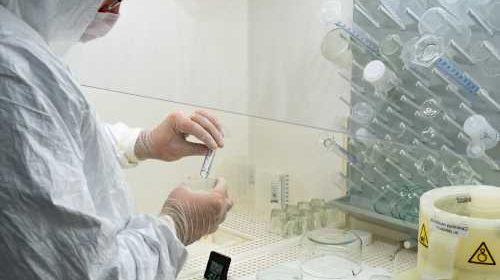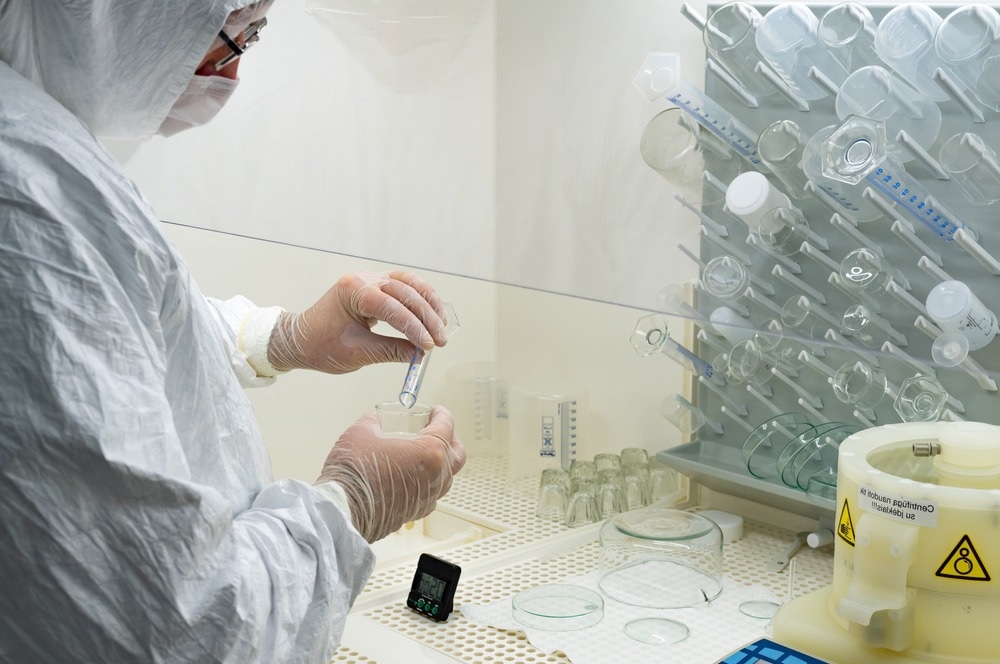ciprofloxacin cephalosporin

In a recent study on the bioRxiv preprint server, researchers found antibodies that neutralize all current severe acute respiratory syndrome coronavirus 2 (SARS-CoV-2) variants of concern (VOC) by conformational locking.

Study: Antibodies that neutralize all current SARS-CoV-2 variants of concern by conformational locking. Image Credit: MicheleUrsi/Shutterstock.com

 *Important notice: bioRxiv publishes preliminary scientific reports that are not peer-reviewed and, therefore, should not be regarded as conclusive, guide clinical practice/health-related behavior, or treated as established information.
*Important notice: bioRxiv publishes preliminary scientific reports that are not peer-reviewed and, therefore, should not be regarded as conclusive, guide clinical practice/health-related behavior, or treated as established information.
Background
SARS-CoV-2 is actively evolving today and is capable of causing clinical infection in those who have already had coronavirus disease 2019 (COVID-19), as well as those who have received a full course of a COVID-19 vaccine, keramag renova nr.1 waschtisch 70 x 53 cm complete with boosters.
This is due to its documented ability to evade existing antibodies. A recent preprint reported two antibodies that neutralize all known virus variants, including the most recent Omicron variants.
Introduction
With over 760 million cases of COVID-19 worldwide, which is growing steadily, there has been intensive research into the problem of confining and preventing viral transmission. Leading to the production of vaccines, monoclonal antibodies (mAbs), and antiviral drugs.
A major problem with the vaccines and mAbs has been the emergence of SARS-CoV-2 variants that evade the host immune response, whether evoked by natural infection or vaccination.
The currently circulating dominant variants are BQ.1.1 and XBB.1.5. These have several mutations in the spike protein that confers upon them the capacity to avoid neutralization by polyclonal human sera.
The latter was useful in protecting immunocompromised individuals against the virus despite their poor response to the vaccines. The failure of this formulation to protect against the newer Omicrons subvariants highlights the need to find potent broad-spectrum antibodies against the virus in its current and future avatars.
Most mAbs are capable of binding to the receptor binding domain (RBD), but a few target the N-terminal domain (NTD), the stem helix of the S2 spike component, the subdomain 1 (SD1), or the site including both the NTD and subdomain 2 (SD2).
The most potent are the RBD-neutralizing antibodies, but their immunodominance also stimulates the evolution of antibody-evading variants.
All clinically authorized mAbs are now rendered inactive by the latest Omicron subvariants."
Thus, broadly neutralizing mAbs (bnmAbs) is essential to neutralize the currently dominant subvariants and future variants resistant to current therapeutic antibodies.
What did the study show?
The current study reports two human mAbs, 12-16 and 12-19, that prevent receptor binding by all tested SARS-CoV-2 variants, with in vitro potency similar to some authorized antibodies. They have been tested in hamsters and found to protect against the Omicron BA.1 variant.
These antibodies were isolated from serum samples taken from convalescing COVID-19 patients.
One patient serum sample (Patient 12) showed high neutralizing activity against all the SARS-CoV-2 spike-bearing pseudoviruses and was further processed to isolate the mAbs with specific activity against the SARS-CoV-2 Beta spike variant.
The researchers found that 12-16 and 12-19 showed high neutralizing activity to both the wildtype ancestral virus and Omicron BA.1 strains, and the latest Omicron subvariants of BQ.1.1, XBB.1.5, and CH.1.1 that have unusual antibody-evading activity.
Both these mAbs target the quaternary site formed by a combination of the NTD and SD1.
Structural studies showed that both antibodies form complexes with a new site of vulnerability recognized mostly by the antibody-heavy chains.
12-19 was found to neutralize the virus more completely in vitro compared to 12-16, perhaps because of the differences in their structure, which allows the CDRH3 loop of the heavy chain in the former to insert more deeply into the aperture of the spike protein between the NTD and SD1 loop 1.
Their binding causes the RBD to lock in the "down" position, thereby interfering with virus binding even though they bind to the side of the spike protein.
The researchers explain…
…the antibody and its CDRH3 forms a 'wedge' between SD1 and NTD that prevents the conformational rearrangement necessary for RBD to reach the up conformation. With 3 RBDs locked in the down conformation, the spike cannot engage host receptor ACE2 and gain entry for infection, suggesting that this may be the mechanism of neutralization for 12-16 and 12-19."
This is a hitherto unknown mechanism for virus neutralization and for interfering with receptor function. The virus can also not bind to the angiotensin-converting enzyme 2 (ACE2) receptor on the cell membrane, even though the antibodies bind distal to the ACE2 binding site.
Along with other mAbs directed at the NTD, both these mAbs prevented ACE2-induced S1 shedding from the virions in correlation with their ACE2-competing efficacies.
Unlike the latter, the former appears to neutralize the virus via steric hindrance effects that use their Fab rather than their Fc regions for neutralization.
Very few mutations in the above epitope were reported among all known Omicron subvariants in circulation, indicating that antibody selection pressure on this site is low in the population.
What are the implications?
Antibody resistance poses a major challenge to COVID-19 management following the emergence of the Omicron variant and its subvariants.
Both the BQ and XBB sublineages are wholly resistant to Evusheld, leaving clinicians without any authorized effective antibody to help treat severe infections caused by these sublineages, especially in immunocompromised patients who lack the active immunity induced by COVID-19 vaccines.
In this scenario, the observed neutralization potencies and protective capability of 12-16 and 12-19 indicate they could be "promising candidates for clinical development."
Secondly, the novel neutralization mechanism brings hope that "there may still be other conserved sites on SARS-CoV-2 spike to be discovered." Antibodies targeting these targets could explain why vaccinated individuals show serum-neutralizing activity against the most recent Omicron sublineages.

 *Important notice: bioRxiv publishes preliminary scientific reports that are not peer-reviewed and, therefore, should not be regarded as conclusive, guide clinical practice/health-related behavior, or treated as established information.
*Important notice: bioRxiv publishes preliminary scientific reports that are not peer-reviewed and, therefore, should not be regarded as conclusive, guide clinical practice/health-related behavior, or treated as established information.
- Preliminary scientific report.
Liu, L. et al. (2023) "Antibodies that neutralize all current SARS-CoV-2 variants of concern by conformational locking" bioRxiv*. doi: 10.1101/2023.04.08.536123. https://www.biorxiv.org/content/10.1101/2023.04.08.536123v1.
Posted in: Medical Science News | Medical Research News | Disease/Infection News
Tags: ACE2, Angiotensin, Angiotensin-Converting Enzyme 2, Antibodies, Antibody, Cell, Cell Membrane, Coronavirus, Coronavirus Disease COVID-19, covid-19, Drugs, Enzyme, Evolution, Helix, Immune Response, immunity, in vitro, Membrane, Omicron, Protein, Receptor, Research, Respiratory, SARS, SARS-CoV-2, Severe Acute Respiratory, Severe Acute Respiratory Syndrome, Spike Protein, Syndrome, Vaccine, Virus

Written by
Dr. Liji Thomas
Dr. Liji Thomas is an OB-GYN, who graduated from the Government Medical College, University of Calicut, Kerala, in 2001. Liji practiced as a full-time consultant in obstetrics/gynecology in a private hospital for a few years following her graduation. She has counseled hundreds of patients facing issues from pregnancy-related problems and infertility, and has been in charge of over 2,000 deliveries, striving always to achieve a normal delivery rather than operative.
Source: Read Full Article